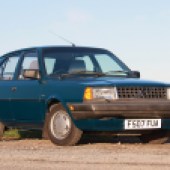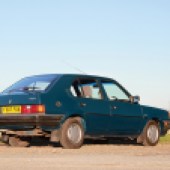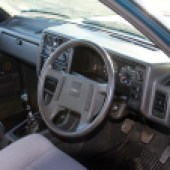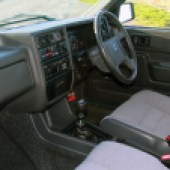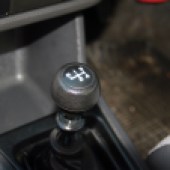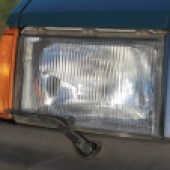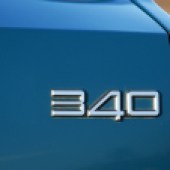After a solid and reliable family classic? The Volvo 340 or 360 is sure to fit the bill – and it’s a bit of a bargain to boot
Images: Simon Goldsworthy With thanks to: Chris Cardwell, Volvo Owners Club
You have to head back all the way to 1976 for the launch of this family hatchback, the first all-new model from the Dutch company of Volvo Car BV. Going head-to-head with rivals from the likes of Ford and Vauxhall, it appeared first as the three-door 343, with the five-door 345 joining the range a few years later. That nomenclature would change in the early 1980s when these became simply the 340, and it was around the same time when the more powerful 360 arrived featuring a 2.0-litre engine and five-speed gearbox.
Topping the range was the fuel-injected 360GLT with a plusher specification that included velour trim, alloy wheels and a rear spoiler. And for those buyers that preferred a traditional three-box shape, the arrival of the saloon in 1983 would have been just the ticket.
The styling might have been conservative but the 300 Series was solidly engineered, with plenty of space and practicality plus a wide variety of engines and trim levels. A facelift in 1985 freshened things up (more efficient engines and trim/equipment upgrades being the highlights) and the millionth example was built in 1988, with production finally drawing to a close in 1991.
Bodywork
The classifieds aren’t exactly littered with these cars, but those that do come up for sale are either sound and original survivors or have been restored to one degree or another. Either way, you’ll still want to establish the condition of the metalwork and key spots to check are the leading edge of the bonnet, the rear wheel-arches, the rear jacking points and the aft end of the sills. Door bottoms can rot, too, and it’s mostly caused by blocked drain holes so check to see whether they’ve been kept clear.
What makes such checks important is that panel availability is poor for the most part: you’ll struggle to find the likes of bonnet and tailgate, and repair sections are scarce, too. Owners clubs and specialists might be able to help in tracking something down. Exterior trim isn’t exactly plentiful, either, so you’ll be relying on finding second-hand parts.
Assuming it looks okay up top it’s well worth spending time ensuring things are solid underneath, so have a good prod of the floors and main chassis rails. There’s also a point above the rear axle where various sections meet, and while it can be tricky to get a proper look corrosion here will be time-consuming to fix. Values simply aren’t high enough to warrant major restoration, so tread carefully before considering anything with major rust.

Engine and transmission
Various engines were slotted beneath the front-hinged bonnet, with the 1.4-litre Renault unit considered pretty much bulletproof. The 1.7 (only available with a manual gearbox) can suffer from a few niggles, including poor running caused by air leaks between the carburettor and its mounting on the inlet manifold; a fix is available from the Volvo Owners Club.
Distributor caps don’t last long either, and replacements can be hard to find; aftermarket items can be short-lived. And while on the subject of ignition, later cars used Renault’s ‘Renix’ system; you need to ensure that replacement modules are the correct Volvo items if things are to work properly. A failed flywheel sensor is easy enough to source and replace. The 2.0-litre Volvo engine fitted to the 360 is strong and reliable, and parts are available if the fuel-injection system needs attention. Ultimately, a record of regular maintenance should see any of the engines cover a healthy mileage before an overhaul is due.
Manual gearboxes are reliable unless abused; just check for the usual issues of slop in the gearshift and whines/crunches. However, Chris Cardwell from the Volvo Owners Club highlights one important issue involving the 340 models. They use a lightweight aluminium propshaft and any misalignment between the engine and rear-mounted transaxle can lead to tearing of the rubber couplings in the shaft and wear in the gearbox itself; be sure to check that engine and gearbox mountings are in perfect condition, and address any problems as soon as possible to avoid the risk of more expensive damage. A torque tube solidly connecting the two units means 360s don’t suffer this problem.
Finally there’s the belt-drive CVT transmission, and although somewhat quirky by today’s standards it works well in practice. There’s good knowledge out there if repairs are needed and replacement belts are available, but it’s worth ensuring the electrical side of things is okay as poor connections can lead to the transmission getting stuck in a high gear. There’s also a centrifugal clutch and revving the engine in Park can burn it out, so be sure everything’s healthy. The friction plate can be re-lined if necessary; specialist Classic Swede can supply a complete kit for around £175. Lastly, look for oil leaks from around the differential as using it to jack the car up can cause damage.

Suspension, steering and brakes
The Volvo 340 & 360 suspension comprised MacPherson struts at the front and a De Dion axle at the back, providing safe and secure handling and a decent ride. Clonks and rattles means things are ready for an overhaul, and you’ll have no trouble sourcing parts. Adjustable dampers are available to replace scarce originals and a pair isn’t dear, and it’s worth considering replacing tired bushes with widely-available polyurethane items. Front strut top mounts can fail and they are quite a tricky design (specialists can provide replacements for around £115 per pair) and it’s worth a check for corrosion in front lower spring cups and around suspension mounting points.
As for the steering, it should feel precise and nicely weighted, so any vagueness will need further investigation; there’s a good chance its caused by a perished rubber coupling between the steering column and rack, and the part is both available and cheap. Power assistance arrived later in the model’s life, and you’ll want to make sure that pipework is free of leaks.
There’s was nothing complicated about the Volvo 340 & 360 brakes, which used a thoroughly conventional disc/drum arrangement and were more than up to the task of dealing with the modest performance. Check for the usual signs of wear and tear, and ensure that lack of use hasn’t caused problems of its own. Otherwise, a rebuild is a straightforward task for an owner that enjoys wielding the spanners and you’ll have no trouble sourcing parts at sensible prices. For example, a set of rear brake shoes for a 340 is around £20.
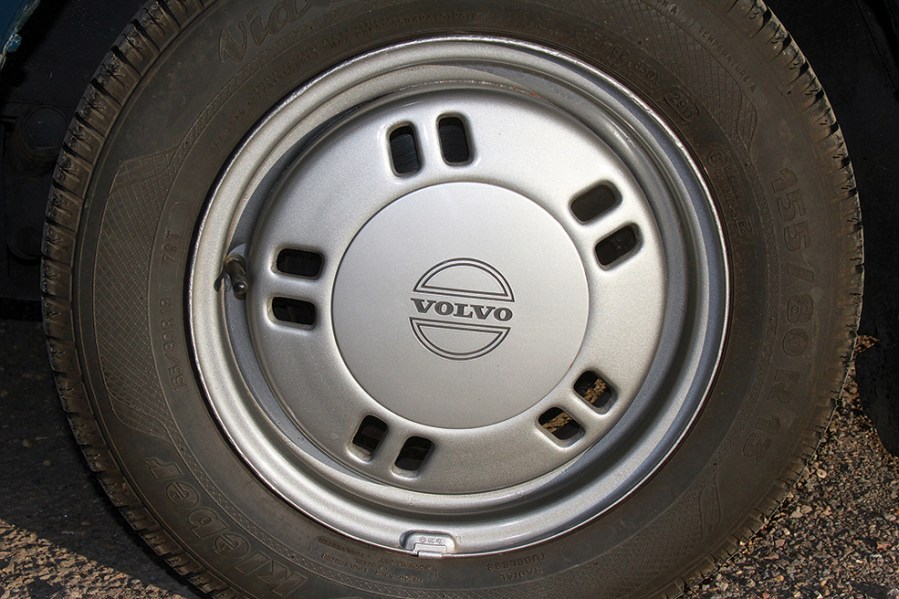
Interior and trim
Volvos have long been admired for their comfortable, solidly-constructed and ergonomically-sound interiors, and you’ll be pleased to hear that these cars boast all of those attributes. If you’re looking for a spacious and practical classic, then a 300 will very much fit the bill. You’ll discover that the cabin is impressively hard-wearing too, and it won’t take long to establish the condition of trim and switchgear.
Perished foam can cause the seats to get a bit saggy but it’s nothing that a decent trimmer can’t sort, and if anything does need replacing there’s a decent supply of used bits. And the news is equally good when it comes to the electrics which are simple, reliable and easy to work on should any problems arise; there is little in the way of complication, so just ensure that everything still works as it should.
About the only point to mention is the potential for corrosion and subsequent overheating of a multi-plug connector at the fuse box, and if you discover that the headlamp main beam isn’t working then the problem is almost certainly here. The Volvo Owners Club can advise on a suitable fix, however, so it’s nothing to worry about.

Volvo 340 & 360: our verdict
In a time when new cars seem to be launched on an almost daily basis, the idea of this one staying in production for fifteen years shows how different the car industry once was. Okay, so by the time it bowed out it felt somewhat dated, overtaken by more modern front-wheel drive rivals, but fast-forward more than three decades and the Volvo 340 & 360 have a character all of their own.
Take the plunge and you’ll have bagged yourself a classic that, assuming it’s in good shape, still feels impressively solid and capable. And if you’re after something that can handle regular use, rather than just the occasional show, then you’ve come to the right place. The driving experience isn’t one that will raise the pulse but was never intended to be, and if you place a greater value on dependability and ease of use then we’d encourage you to seriously consider everything these cars have to offer. Throw affordable prices into the mix, and it’s a very tempting proposition.
Cars needing some work are in the region of £2000, but if you want something rather nicer then you won’t have to stretch the budget a great deal further; around £3000 or so will bag something that will benefit from some light tidying and fettling, and that really isn’t much money for a car with so much to offer.
With even the absolute best examples commanding £7000–8000 this isn’t a classic that’s going to break the bank. And given the sums we’re talking about here it’s clear that entertaining the idea of a project – even if you could find one – just doesn’t make sense. On a broader note, it’s reasonable to expect a 360 to fetch a little more (especially the GLT) but the difference is relatively small, and it’s better to concentrate on condition than any specific model. And with so few still on the road – fewer than 250 in all likelihood – you can’t really afford to be too picky.

Volvo 340 & 360 timeline
1976
Styled by John de Vries, the new model is launched as the 343 powered by a 1.4 Renault engine with a CVT transmission.
1979
The range is boosted by the 5-door 345 and there’s also the option of a manual gearbox alongside the CVT.
1982
Autumn see the more powerful and better-equipped 360 introduced, and a minor facelift sees changes to the frontal styling and a revised interior.
1983
This year sees the launch of the 4-door saloon and the 343 and 345 badges are replaced by 340.
1985
Almost ten years after launch a more wide-ranging update introduced styling tweaks and more efficient engines in both carburettor and fuel-injection form.
1991
Production ends with around 1.14 million made.


